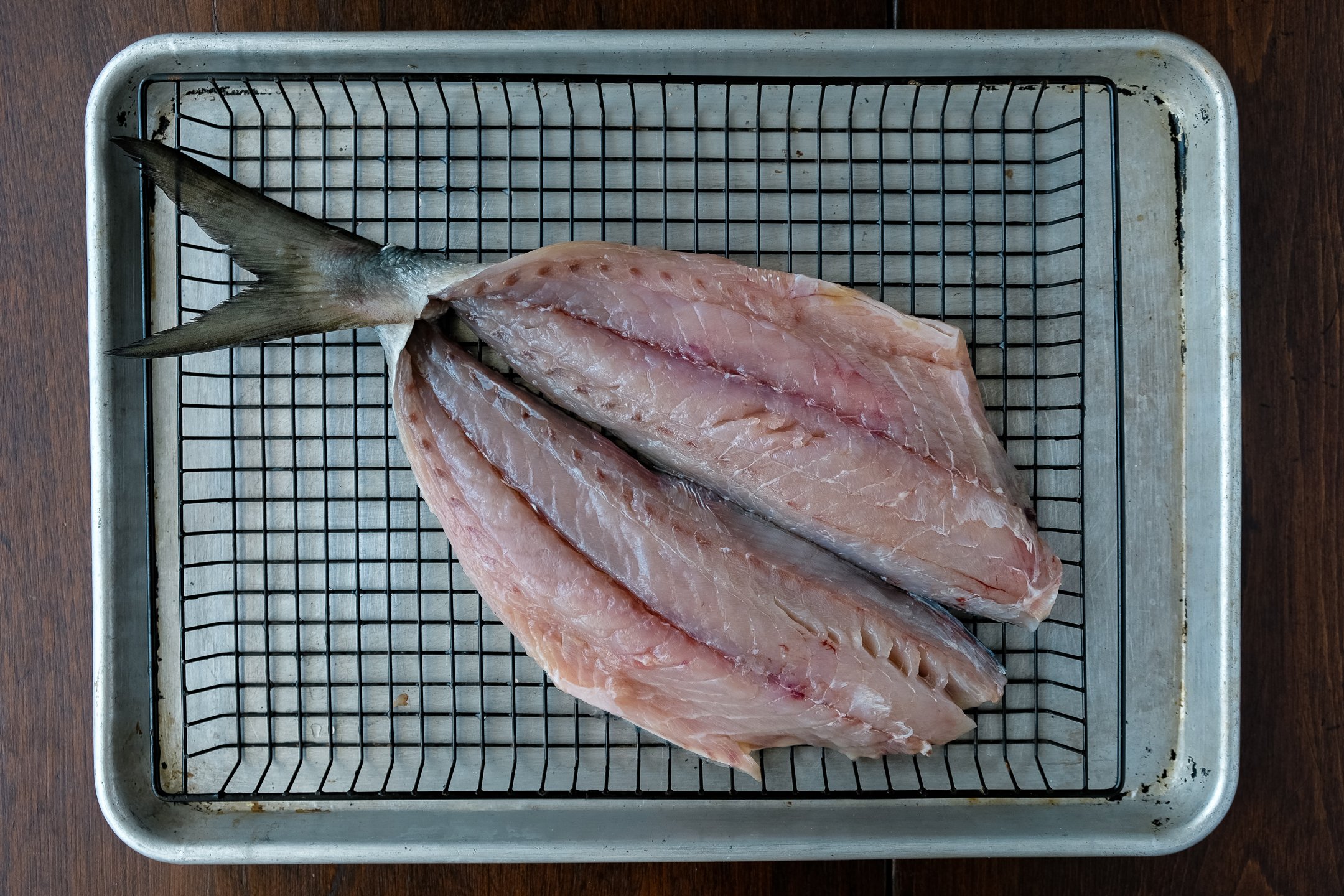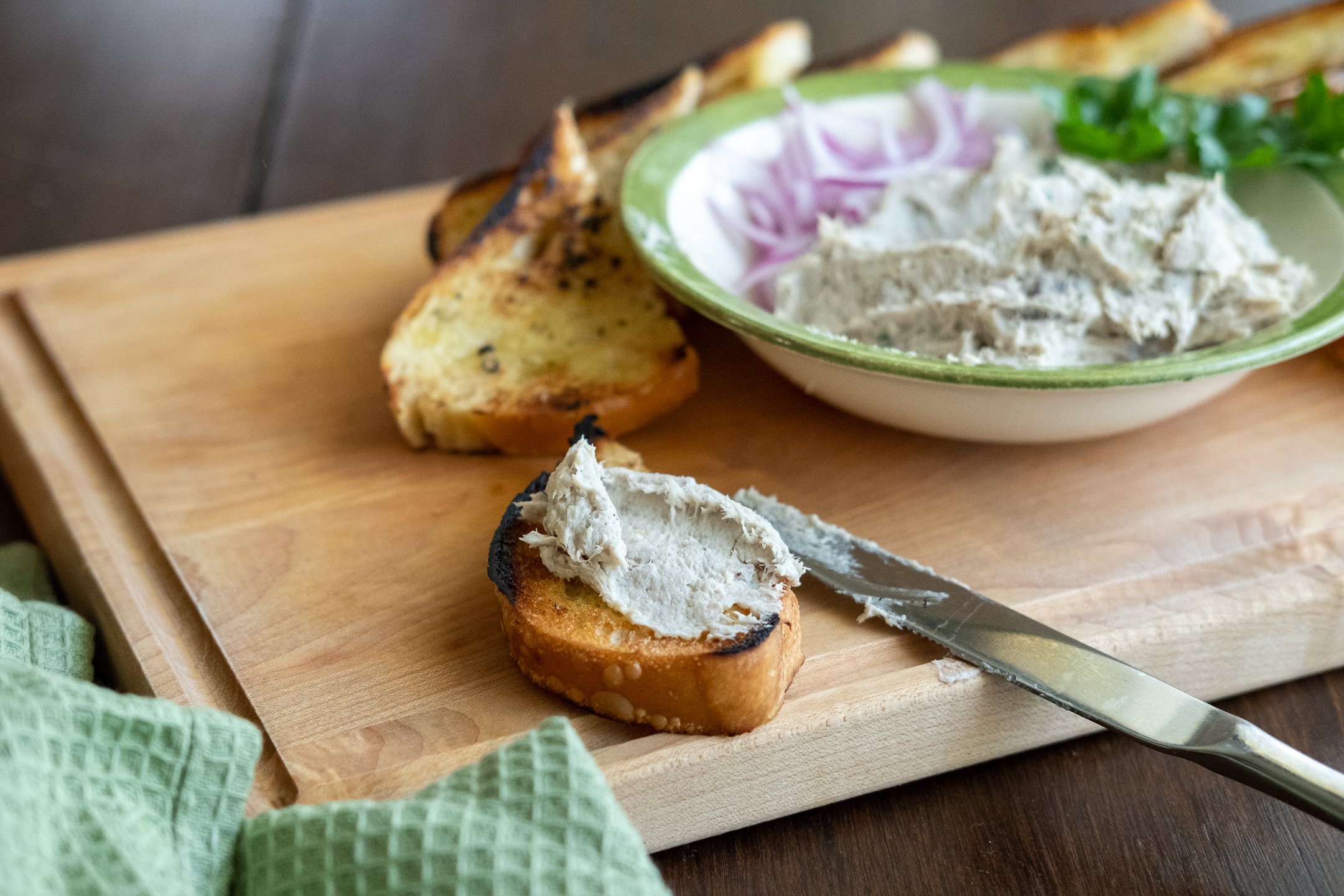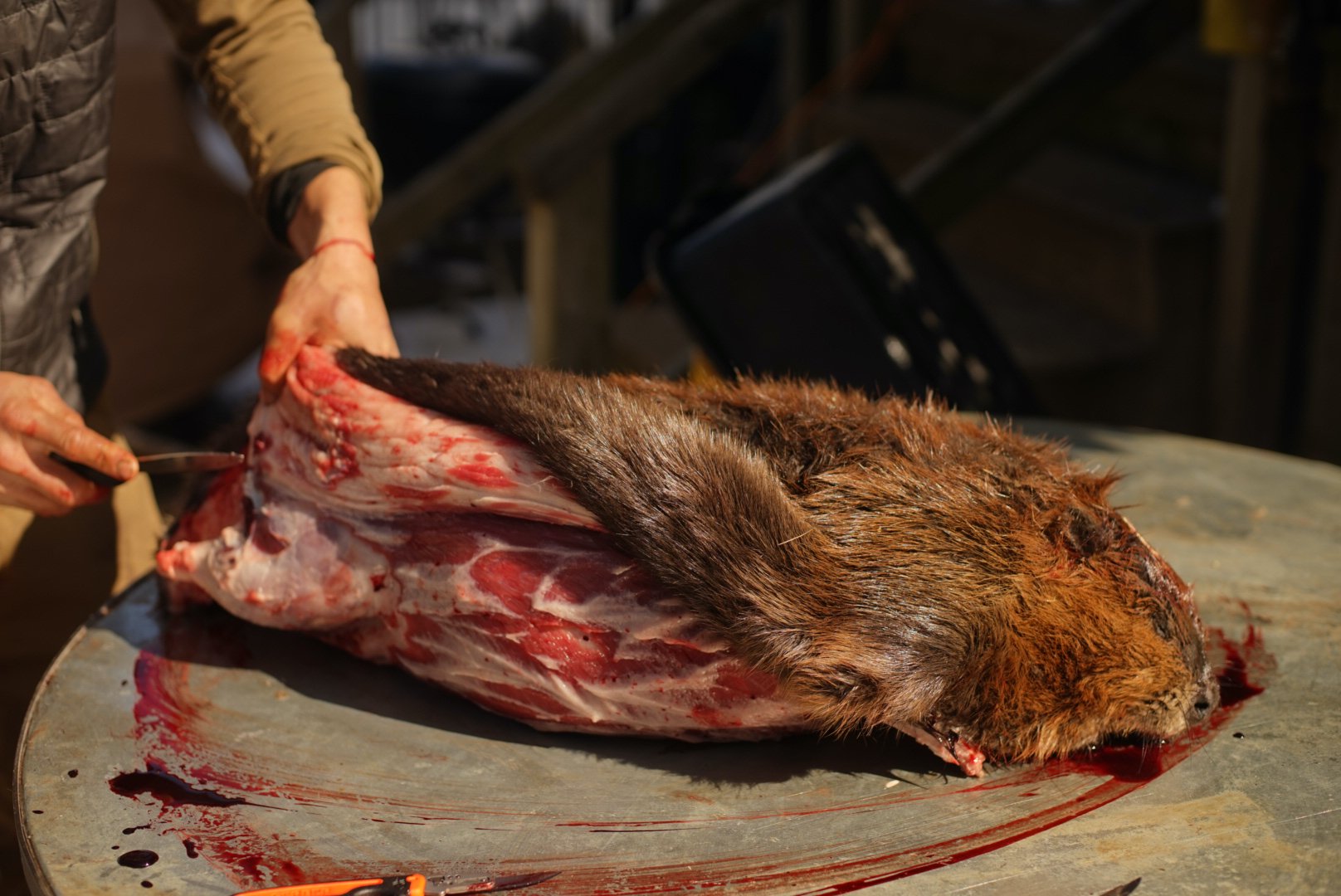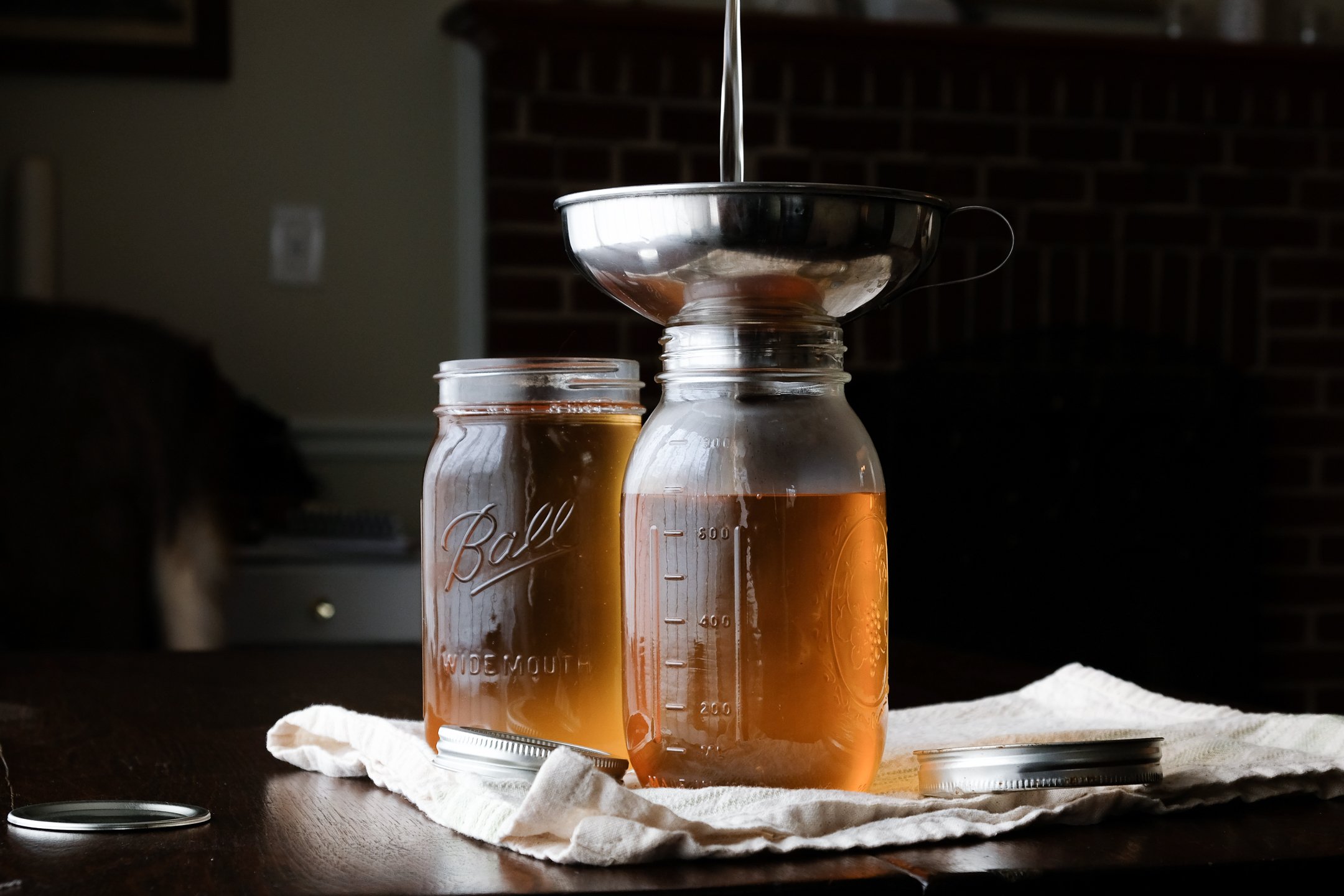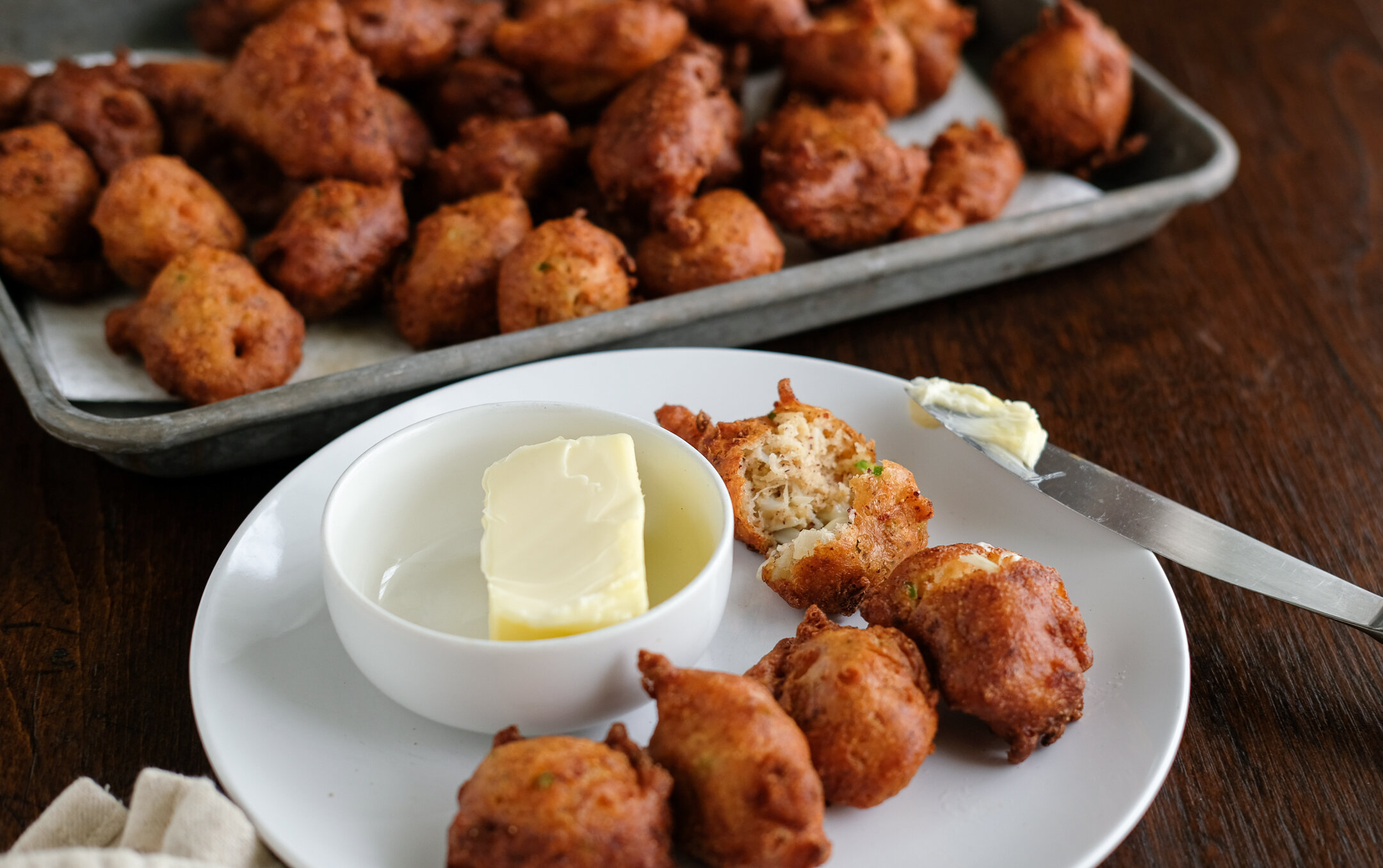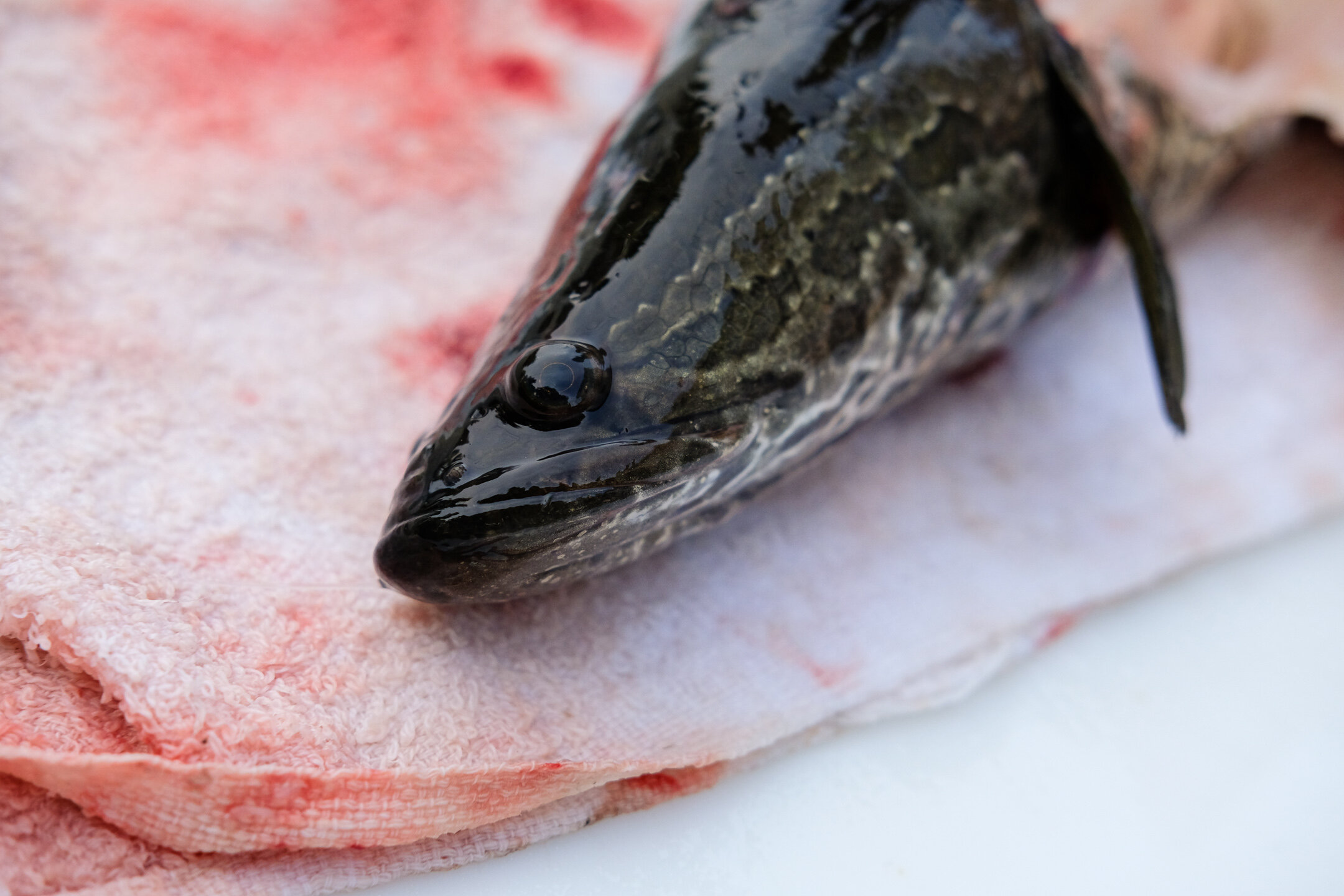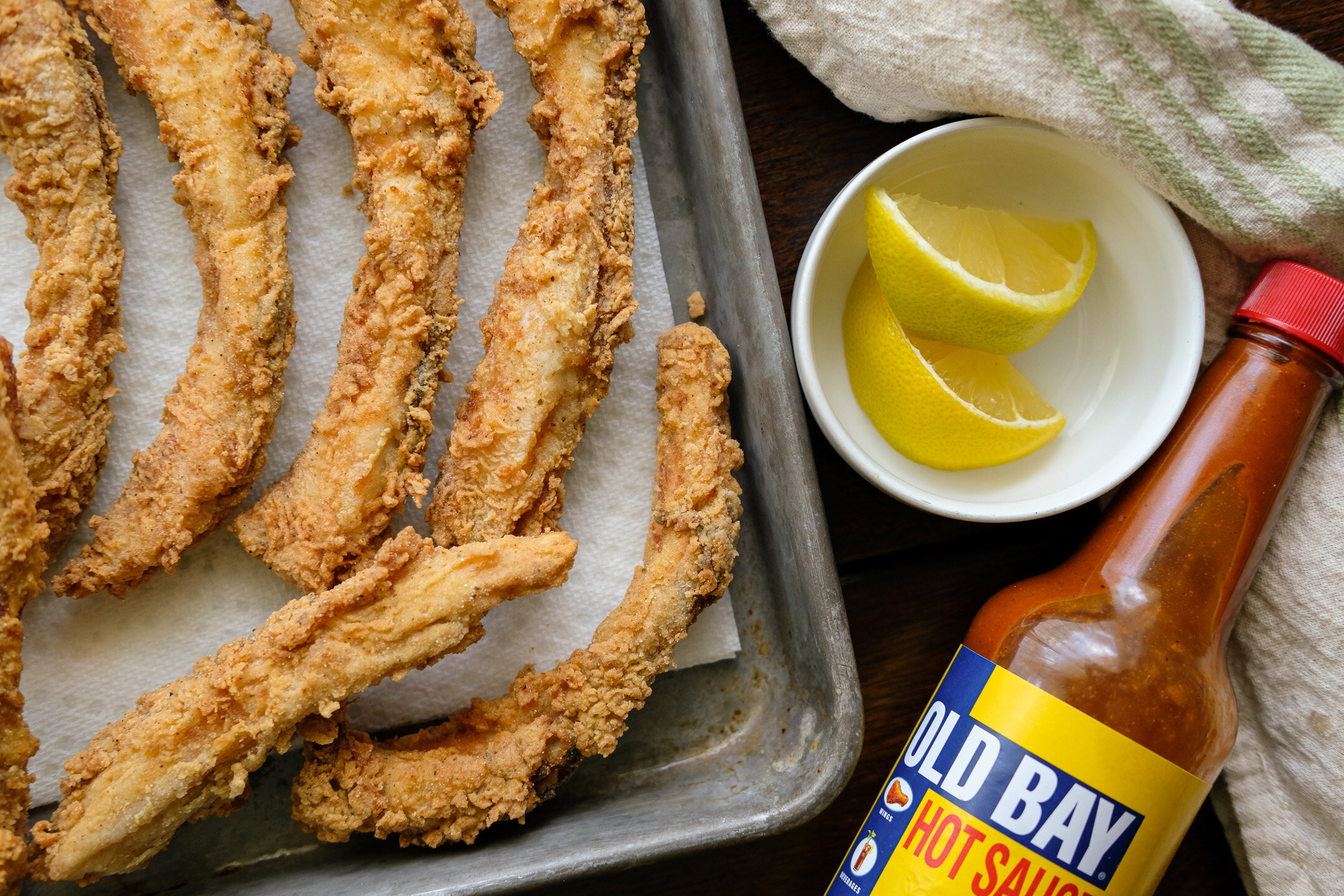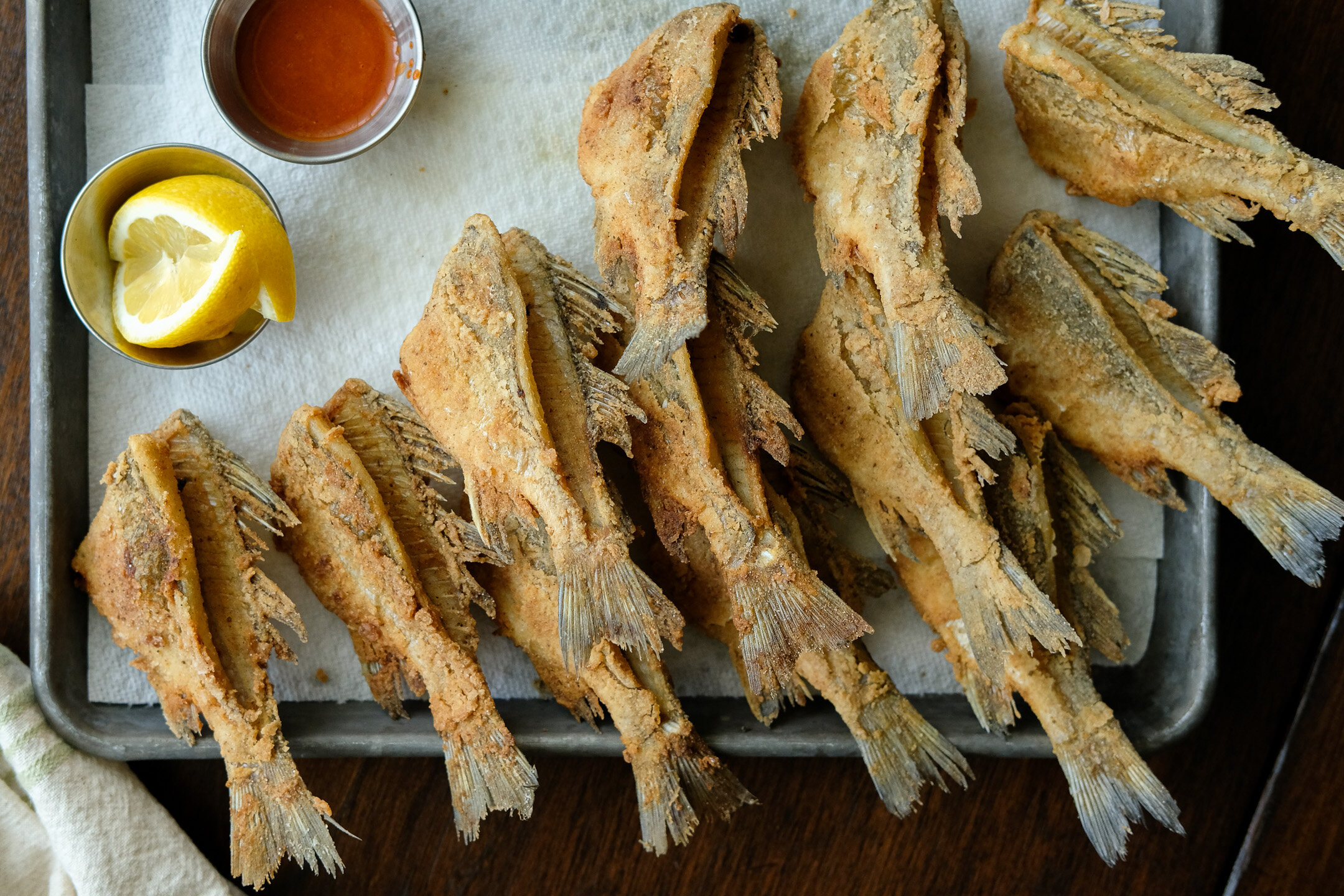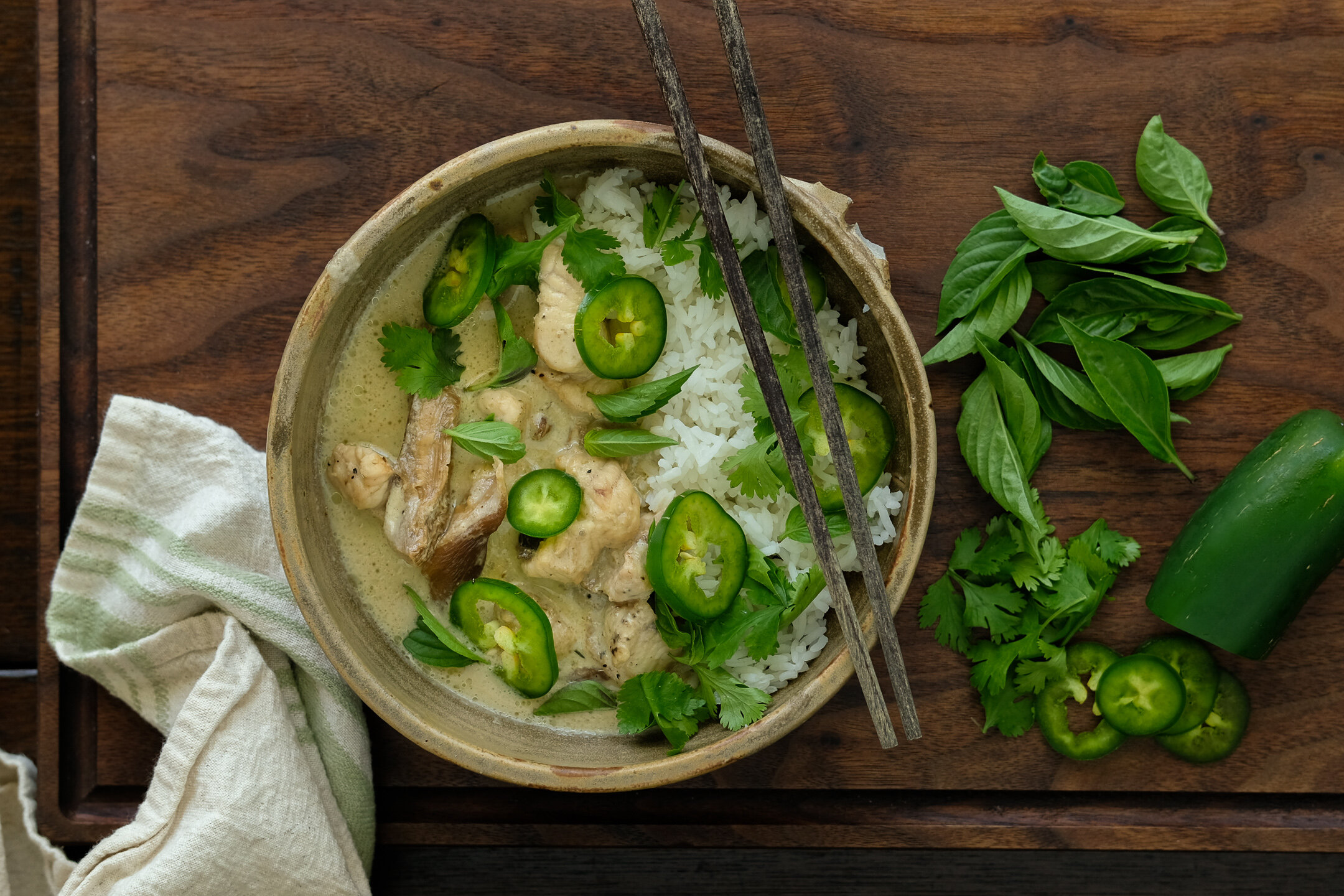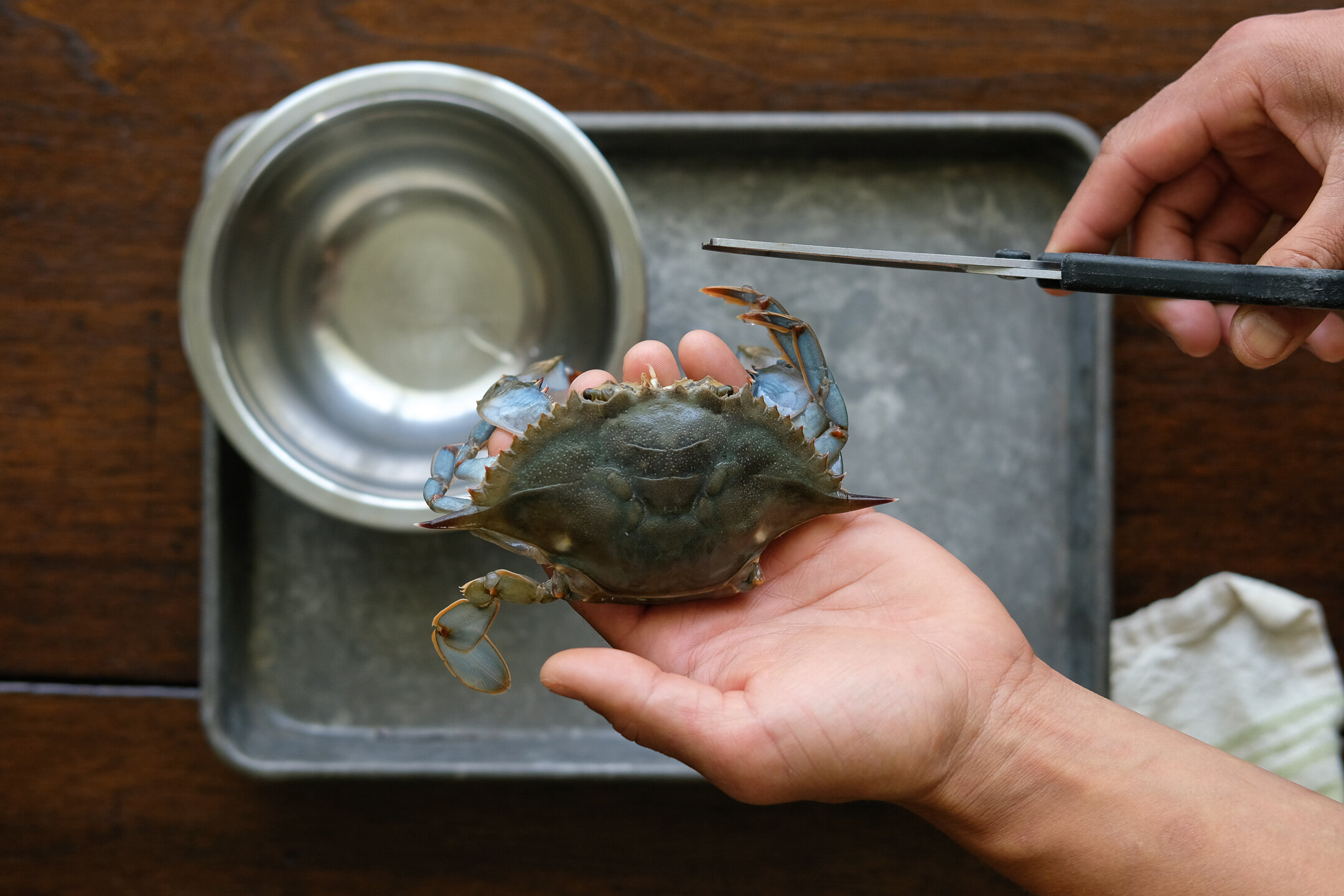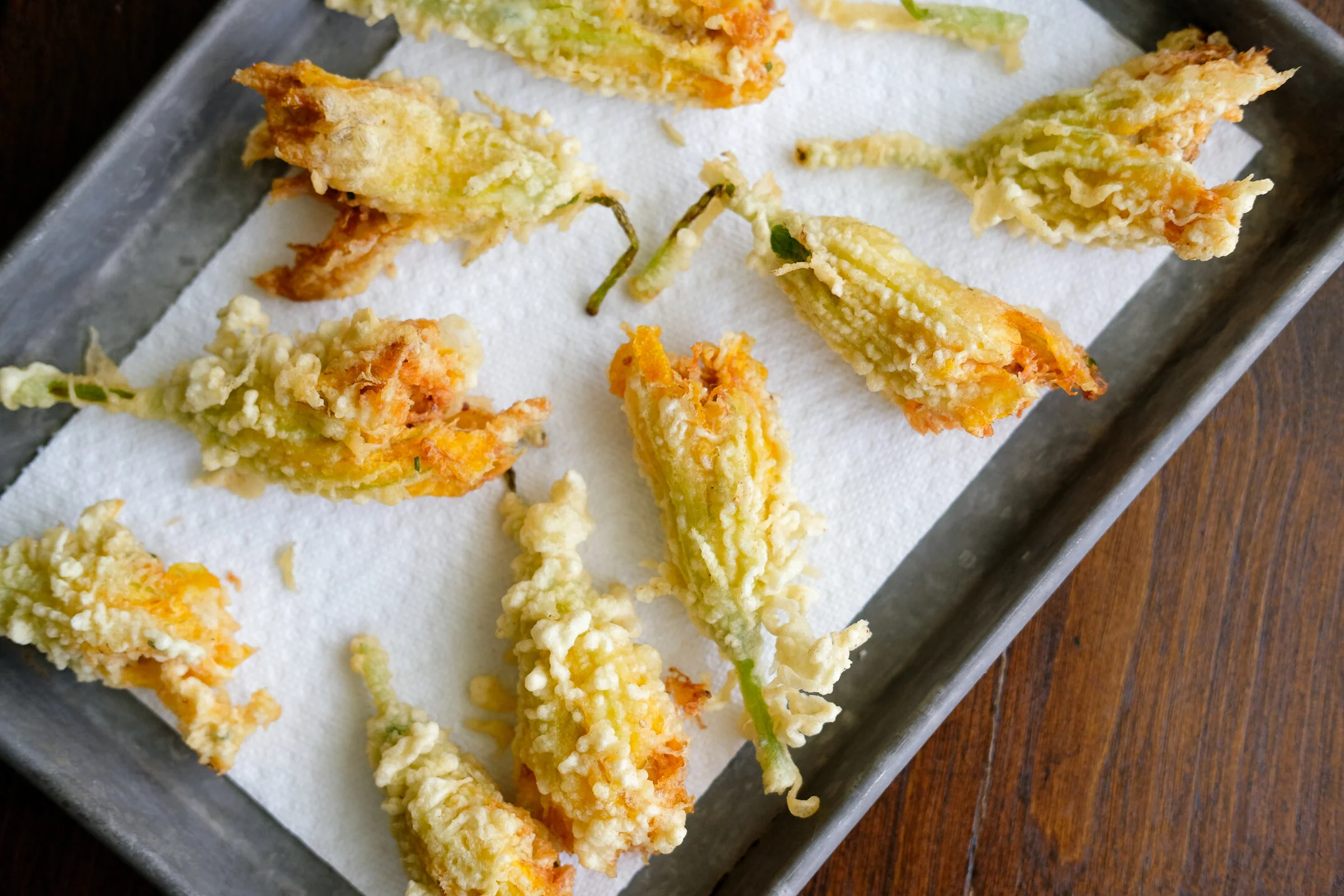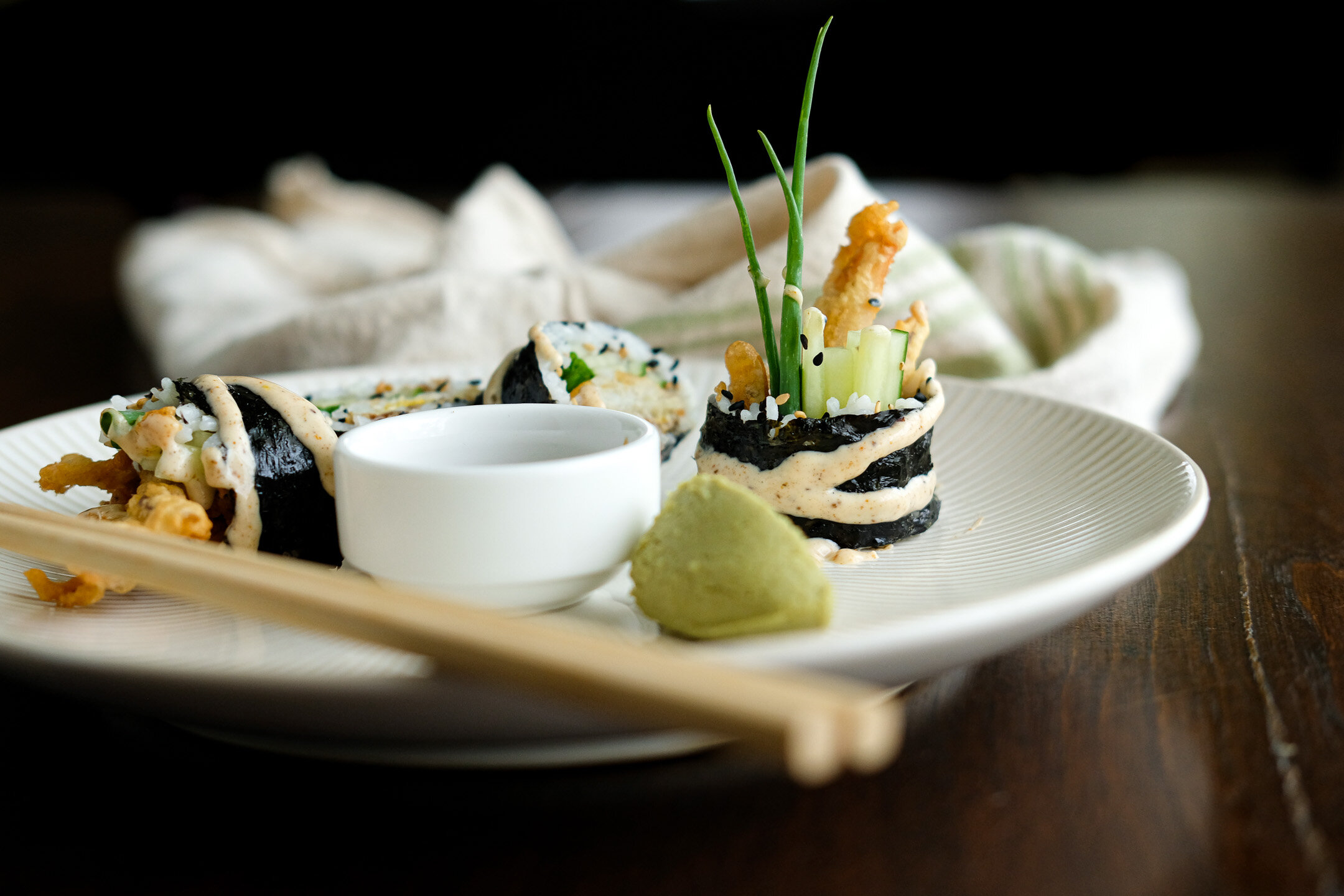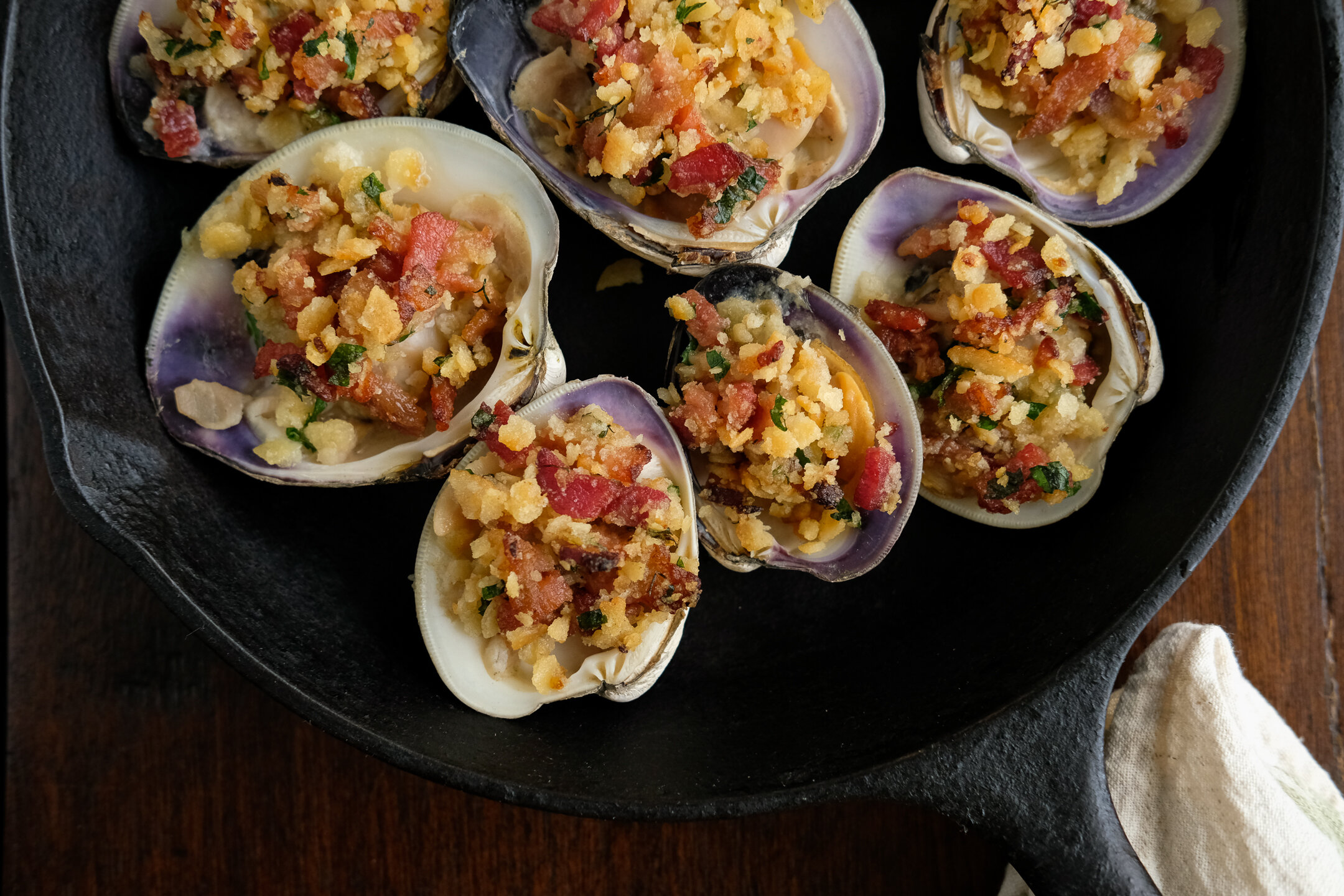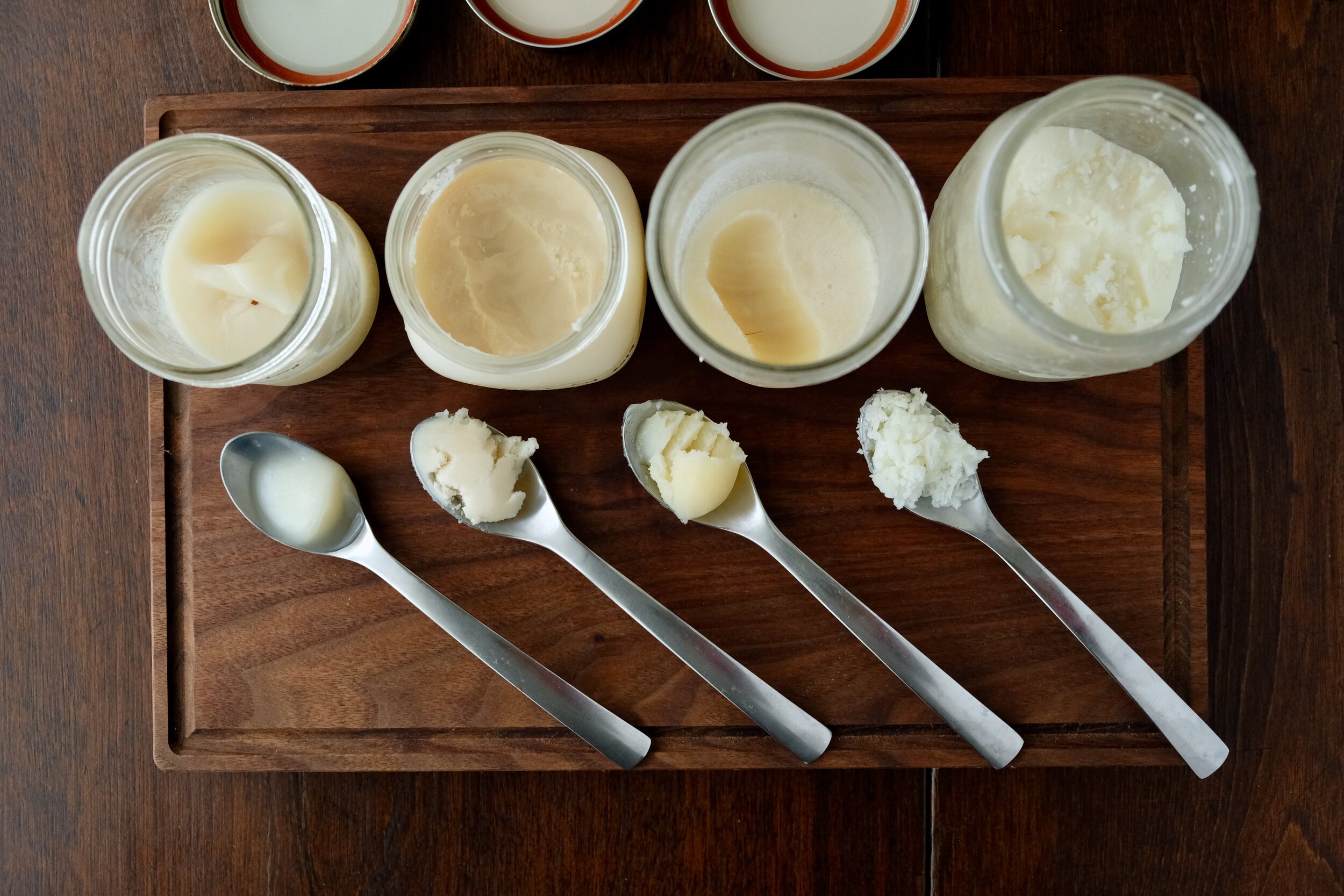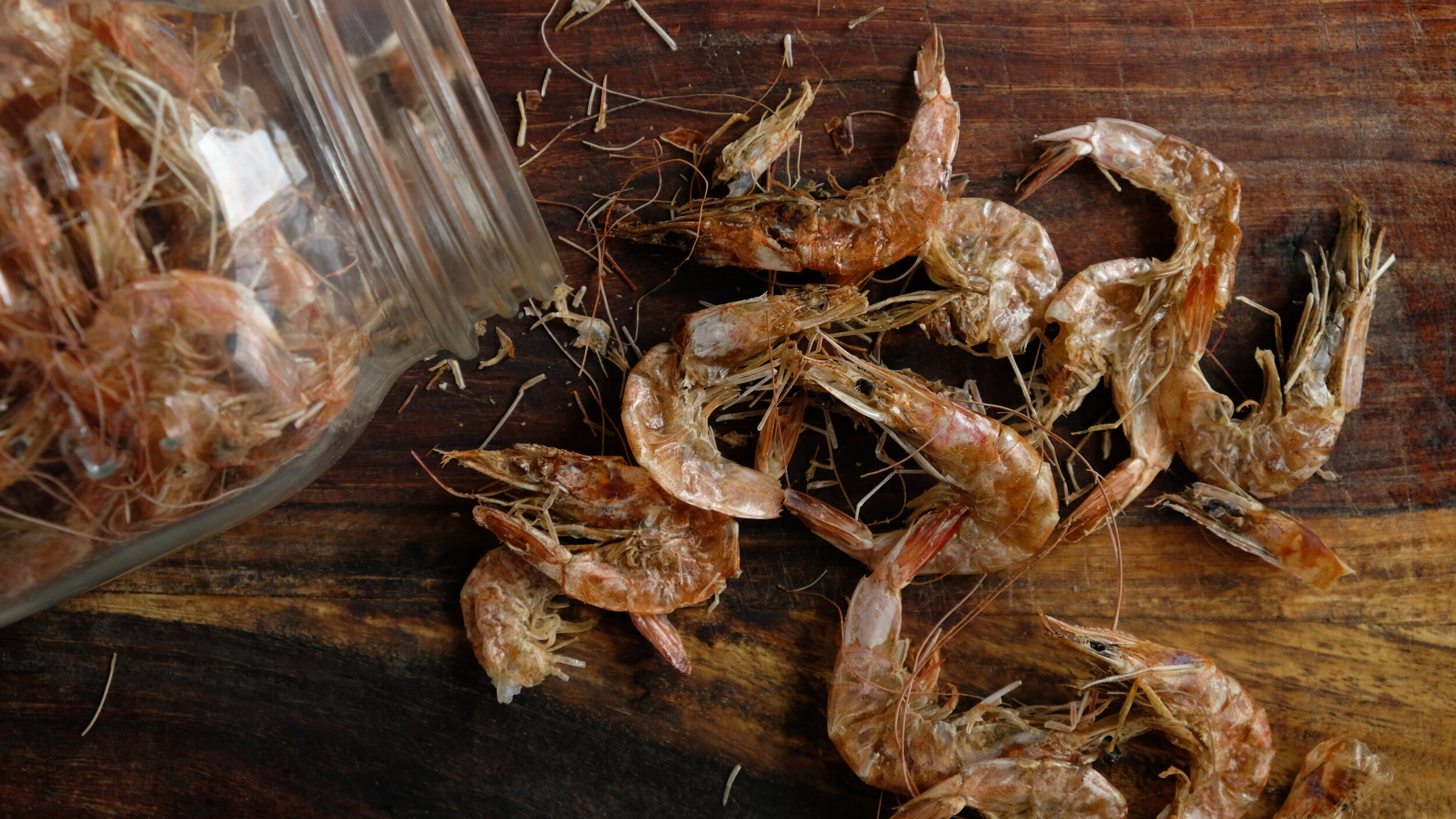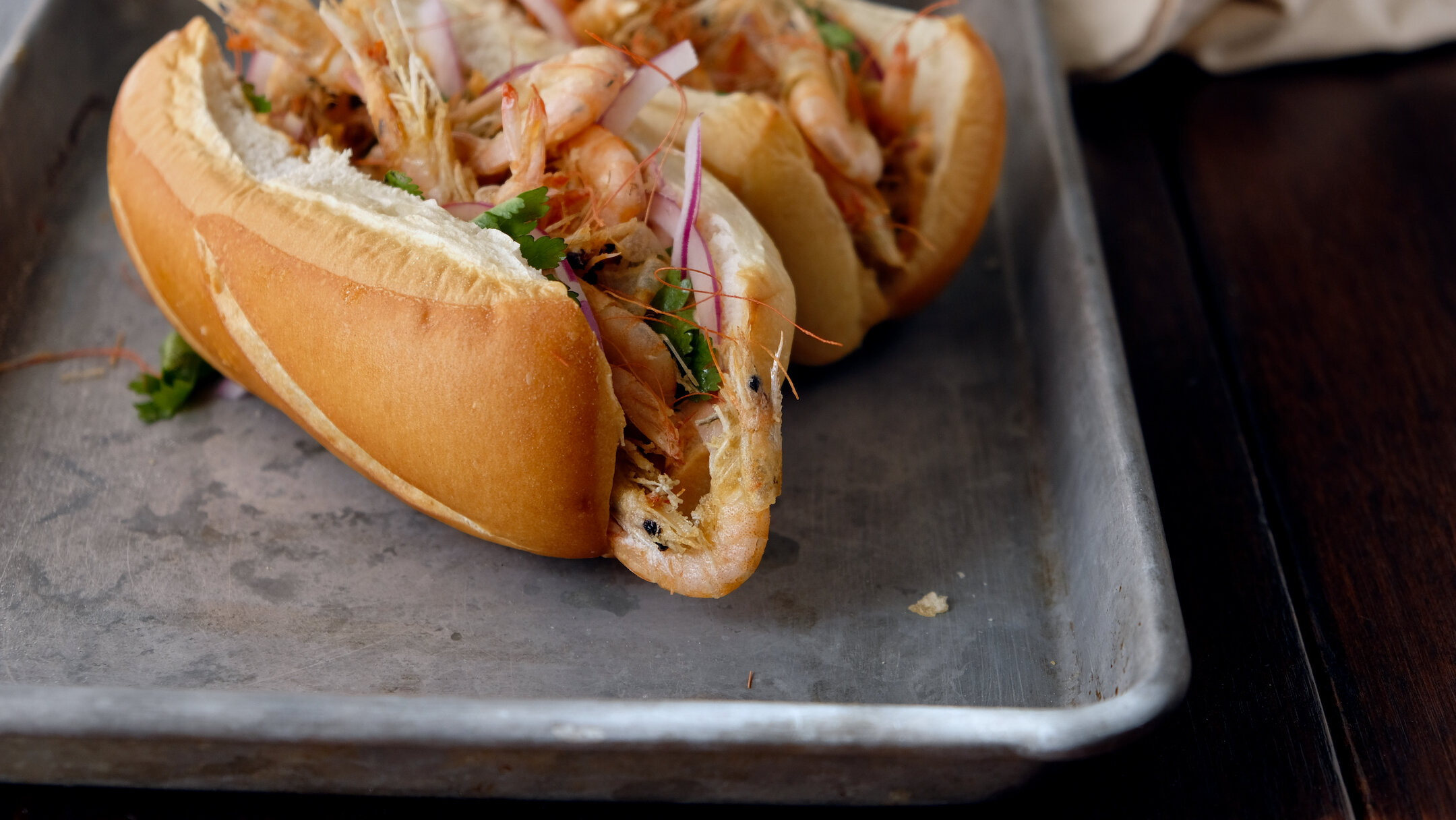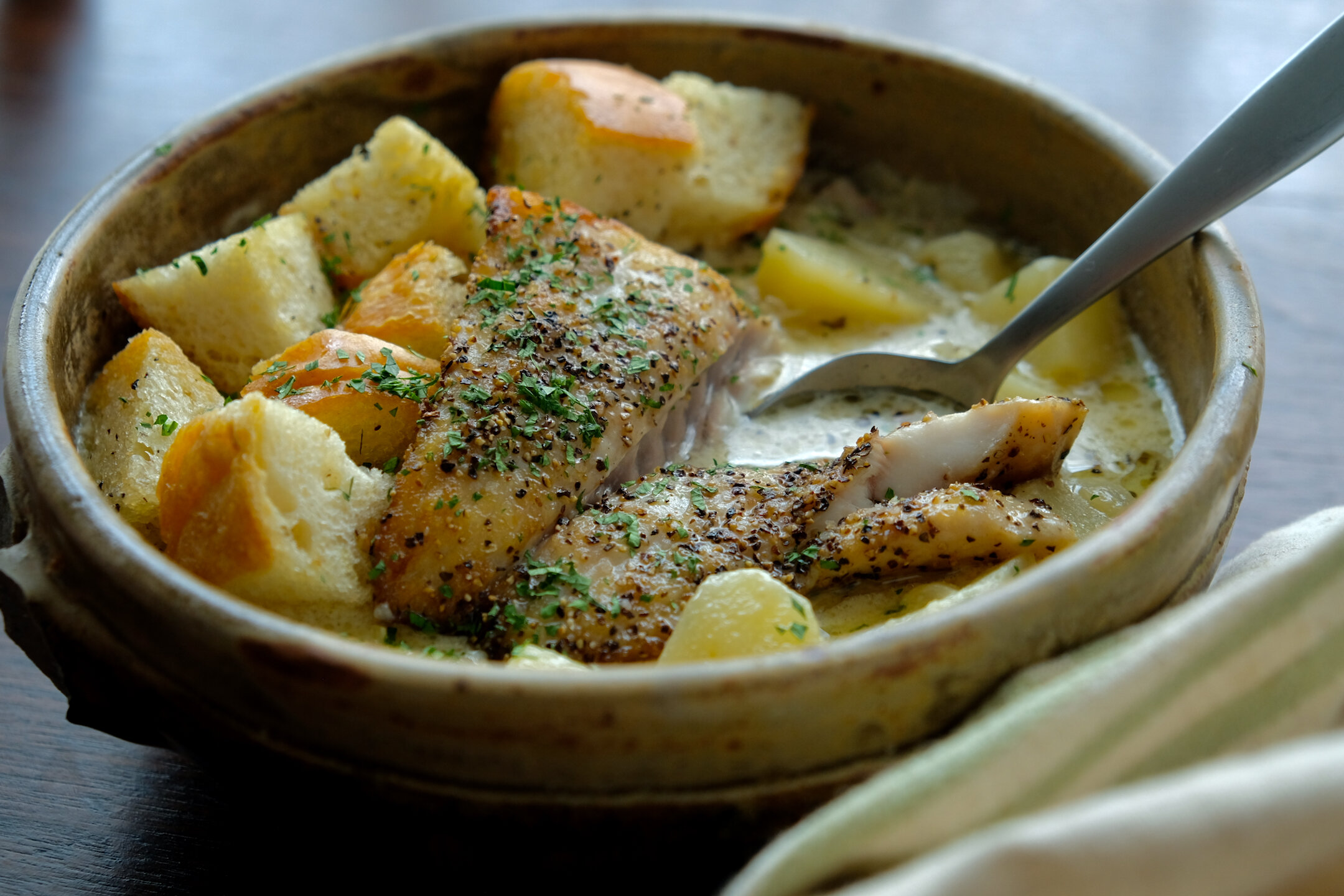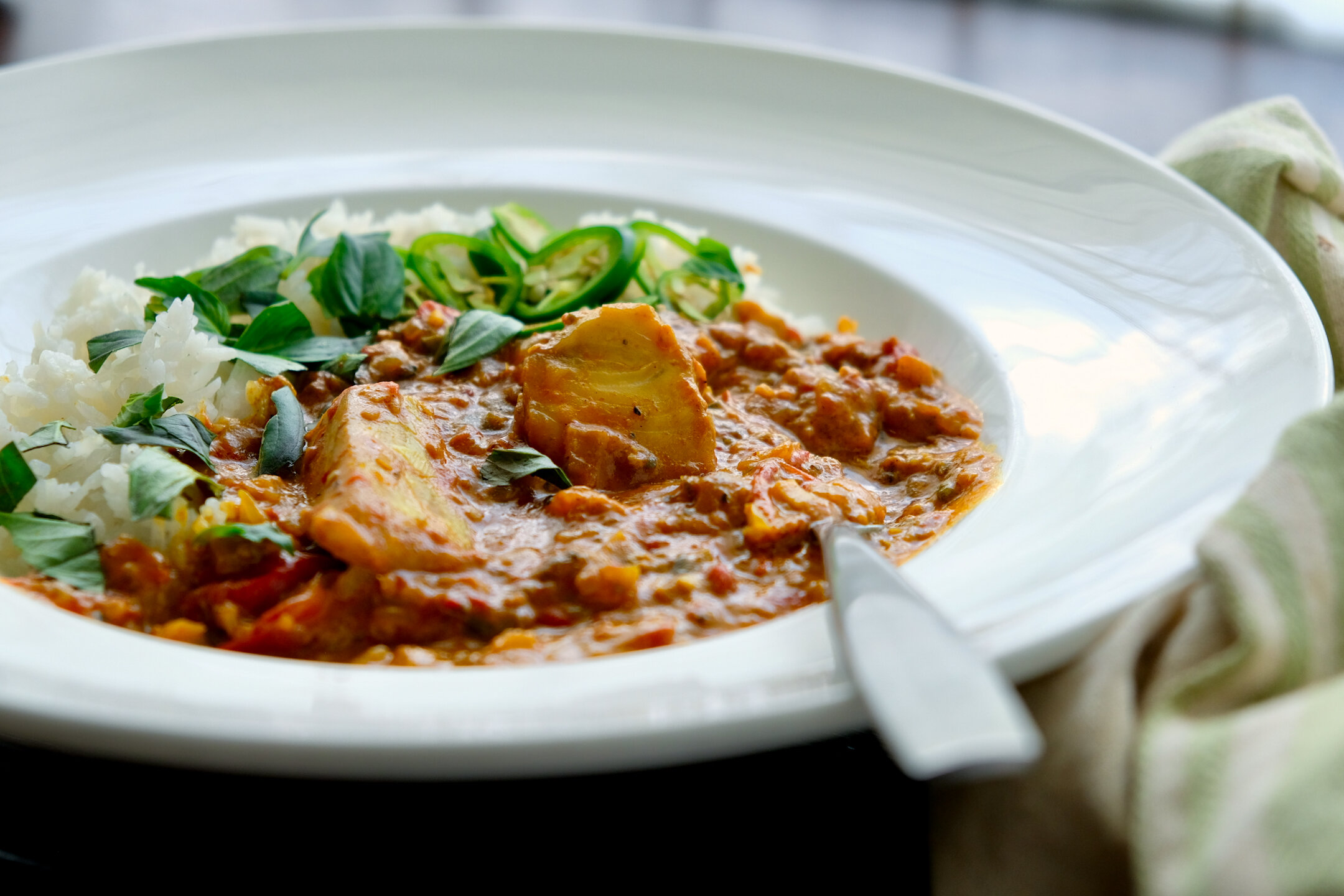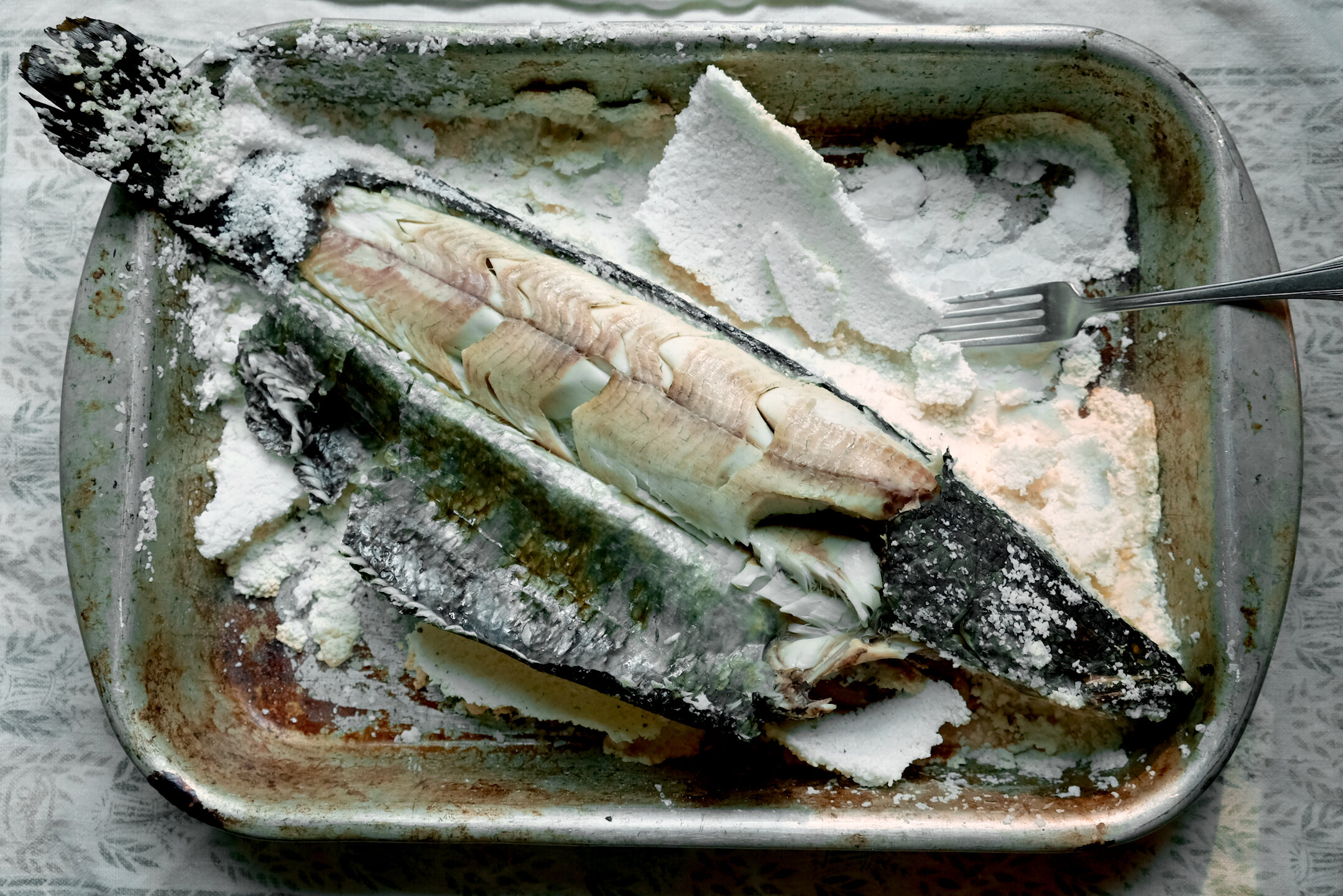How to eat a bluefish

I love bluefish. I find just about everything about them admirable. They fight out of their weight class, test your gear, school up, and when they're in a feeding frenzy, it's pure chaos above and below the water.
For such a fun fish to catch, they are much maligned. I can understand why a person would dislike them, even though they’re the same reasons I love them. When you aren’t targeting them, they’ll cut your leaders, shred your lures, and make an actual bloody mess when they get in the boat. But if they tasted like flounder, I’m sure people would be more pleasantly surprised than annoyed. Bluefish don't have a great reputation as table fare- they’re a “trash fish” to most, and as I have learned from a career in fine dining, reputation is everything when it comes to food.
Trash fish. Oily, fishy, only good smoked. That's basically what you'll hear from people when you ask them about eating bluefish. While I do agree that improperly cared for, bluefish is pretty strong tasting and texturally unappealing, the opposite is also true. Bled, iced, and eaten fresh, there aren’t many fish in the Bay that are tastier.
The following guidelines will help you make the most of the tastiest trash fish in the bay.
Care:
Proper care of bluefish once they are in the boat is non-negotiable.
Bluefish are a bloody, oily fish, and bleeding them out changes the appearance and taste of the fish dramatically. I accomplish this one of two ways: I either rip the gills out, or make an incision behind the pectoral fin towards the main arteries. The gill method works great when you’re in a hurry and don’t have a knife, but it does tend to be messy and can be inconsistent.
A technique a good friend showed me while trolling for macks and blues was to swing the fish into the cooler with the lure still in its mouth, close the lid most of the way, and use the leader to pull the fish's head partly out of the cooler, using the lid to keep the fish’s head in place to remove the hook. You can give the lid a thump and knock the fish out as well, which makes handling and bleeding the fish a lot easier.
When bleeding a fish, I generally prefer to make an incision behind the pectoral fin, moving the point of the knife towards the head and severing everything. You'll know you did it right because blood will dump out of the cut. This method is consistent at exsanguinating the fish. I make this cut after the fish is in the box, and I try to have a good purchase on the fish to keep it from flopping out of the cooler and painting everything with blood.
Icing is even more important than bleeding. You can eat bluefish that have not been bled, and they’ll be okay- a little stronger than a bled fish and much bloodier when you’re filleting, but edible. If you don’t ice bluefish, you are setting yourself up for disappointment. Because bluefish are so oily, they go rancid quicker than less oily fish. A poorly iced bluefish, or worse, a bluefish sitting in a 5 gallon bucket of warm summer water, is a mushy, bloody, fishy mess. The meat on a bluefish will change from “delicate-yet-firm” to “mashed potatoes” in a matter of hours if not iced. On that note, there’s no such thing as too much ice. I like to make sure every side of the fish is covered in ice: top, bottom, left, right. I also don’t stack the bluefish up in the cooler without arranging a layer of ice between them.
When we go out to target blues specifically, I like to add a little salt water to the cooler to make an ice slurry. I bleed the fish, and submerge them head down vertically in the cooler. This is about the best way there is to ice down a fish in a hurry. Keep the fish on ice until you are ready to fillet them. The colder you keep them, the firmer the flesh will be.
Freshness:
Now that you have ice cold bluefish in the cooler, you need to have a plan on how and when you will be eating them. I’ve said it before, and I'll say it again: fresh bluefish is delicious. But fresh is a relative term- some fish will taste great a few days out of the water, maybe even a week if properly stored. Bluefish have a much shorter window. You have one to one and a half days of prime eating, then they start to take on the darker, more pungent flavors that people love to hate. As a general rule, I give bluefish a 24-36 hour window for fresh eating. If you’re going to fry fish after a trip, cook the blues first.
One of our fish camp staples is bluefish sashimi. You heard me: raw, uncooked bluefish. The mention of this raises a lot of eyebrows, but I have yet to serve this to anyone and had any reaction other than amazement. Fresh, same day bluefish, skinned, sliced thin (I don’t even bother taking the blood line out), dressed with some ginger and soy will change the way you look at bluefish. More on this dish below in the preparation section.
The ephemeral nature of these fish can be frustrating. It isn’t always convenient or possible to have a fish fry after a day on the water. And sometimes you get into them when you are least prepared to deal with a limit of rapidly degrading fish. That’s why it’s best to have a plan before you head out on the water. When we are targeting blues, I like to have a plan on what to do if we are successful. If we want to make smoked bluefish, I might make the brine ahead of time. If we’re going to pressure can the fish, or make bluefish cakes, I make sure I have time to do so.
There is nothing worse than getting into a blitz of blues, getting them home, and realizing you don’t have the time to properly take care of them. This brings up another point- you don’t have to take a bunch of fish home.
When Rachel and I are crashing at our friend’s place on the shore, we’ll keep a few blues for that night’s dinner, but release everything else. We don’t have the option to can, smoke, or freeze the fish while we’re out there, so we just take what we’ll eat that day. On the last day of these trips though, when we’re headed home, we’ll keep a few more knowing that we’ll have the space and time to properly process the blues that same day.
Preparation:
Preparing blues falls into two categories- fresh and preserved. While you can fillet and freeze most fish to cook at a later time, freezing raw bluefish doesn’t work out well. The high oil content will cause the fish to change in taste even when frozen. In addition to the stronger and less desirable taste, the texture will be destroyed. Bluefish that have been frozen raw and thawed have a mushy texture that isn’t appetizing. Couple that with the strong fishy flavor, and you can see why most people don’t like them.
Your options for getting the best taste out of bluefish are to either eat it right away, or preserve it.
Cooked:
Eating fresh is simple. Prepare bluefish however you would cook speckled trout, flounder, redfish, or rockfish (striped bass for anyone outside of the bay). Fried, broiled, grilled, it's all good. I recommend removing the dark bloodline if you or your guests are sensitive to stronger tastes, but aside from that, bluefish should be cooked like any other prized catch.
One note: keep the fish cold while you're filleting and preparing. Pull the fish out of the cooler, fillet them, and put the fillets in a container on ice until you are ready to cook. It's that simple.
Raw:
The absolute simplest and most dramatic way to enjoy bluefish is to eat them raw. Fillet and skin the fish, then slice thin cross-grain on a bias. Serve just like this over sushi rice with a side of soy for the simplest preparation. Or make a poke bowl, “spicy tuna” style mixture, or my favorite, a ginger-soy-lime based dressing with some crushed nori and sesame.
Preserved:
Preservation is your best option if you’re not eating the bluefish within a day or so. This includes pressure canning, smoking, or making cakes. While pressure canning is an entirely separate method, smoking and fish cakes share the same basic idea: cook the fish fresh, then freeze it.
If you’re familiar with pressure canning, the world is your oyster. I like to remove the majority of the bloodline, and add some hot sauce to the jars. Pressure canned bluefish is similar to canned sardines or herring- they're great with crusty bread or crackers. You can even give them a light smoke before canning to get a kipper-like product.
If you want to learn how to pressure can fish, or any other protein, please consult this USDA guide to home canning.
I find that cooking the bluefish fresh and then freezing (whether I'm making cakes or smoking) is my preferred method of preservation. I smoke a few batches of bluefish every season, which I then use to make dips and pates, or shred it into hash, or add to any seafood dish that needs a little salt and smoke. Frozen, smoked bluefish keeps extremely well. I have no loss of quality with smoked bluefish that has been in the freezer for up to a year.
As perfect as smoked bluefish is, I really only need so much of it. This is where fish cakes come into play. Cooked fresh and formed into patties, my bluefish cakes taste similar to crab cakes. No, they are not a substitute for crabmeat (nothing is), but it’s a similar overall taste and texture, and definitely a world apart from what most people have experienced when they eat improperly cared for blues.
The method for making bluefish cakes is simple: cook the fillets fresh, cool them down, flake the meat and form into cakes. Once formed, I like to freeze them on a sheet pan, then vacuum seal them. To eat, let them thaw in the fridge then give them a sear and pop them into the oven to warm up completely. Serve with your favorite sauce- tartar, cocktail, remoulade, etc.
Final thoughts
A few short notes on things that didn't fit nicely into the previous sections.
Brines, soda, Italian dressing, etc: A lot of wild game and fish recipes call for a brine. Brines and cures are used when smoking fish because they draw out moisture and season the fish internally. This leads to uniformly seasoned meat and better smoke adhesion. Smoke does not permeate into water-rich protein well. The salt also helps prevent unwanted bacterial growth, as the fish will be kept in the temperature “danger zone” for part of the process.
While a brine will season the fish and firm it up, it’s not always necessary, especially when cooking fresh. It seems that most of the time, recipe writers are using a brine as a way to cover up the taste of a particular protein, but as mentioned numerous times, if cared for properly, there is no need to cover up or mask the flavor of a fresh bluefish.
This leads me to soda, Italian dressing and all the other ridiculous stuff people seem to think they should marinate fish in. None of these ingredients are magic, what they are in general is highly acidic, full of sugar, and salt. The acid will change the texture of the fish, denaturing it, much like ceviche, but soda flavored. Which, I'll stand my ground on, is gross. If you want diet soda flavored fish, you probably should just stop eating fish.
Note on size of bluefish: Younger animals are more tender and milder in flavor, it’s a universal thing. Smaller bluefish will be lighter in flavor than big ones. I have also found that the texture of smaller fish to be more desirable- fish under 5 pounds are, in my opinion, the best ones for eating fresh. Larger specimens have a darker flavor, and they are best smoked or released.
Hopefully this article has provided you with enough information on how to enjoy bluefish, and maybe inspire some to give it a second chance.


